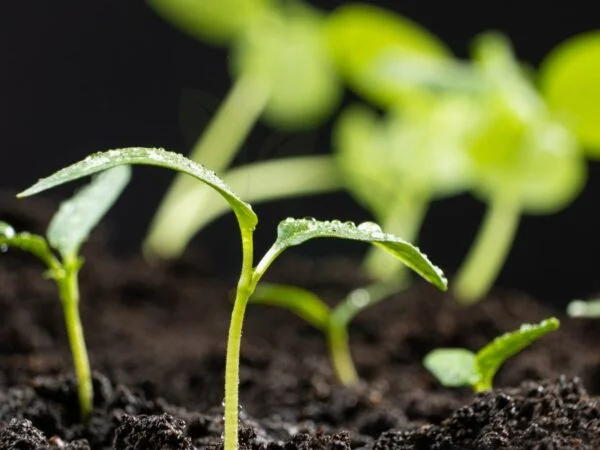Looking to grow your own broccoli? Curious about the secrets to successful broccoli planting? Wondering how to get those vibrant green heads in your garden? Ever thought about the satisfaction of harvesting your homegrown broccoli?
Embark on a journey with us as we delve into the world of planting broccoli plants in the garden. Discover the step-by-step guide, essential tips, and tricks for cultivating these nutritious and delicious veggies right in your backyard. Get ready to elevate your gardening game and enjoy the fresh taste of homegrown broccoli!
Key Takeaways
-
Plant broccoli during the optimal planting time to ensure successful growth and harvest.
-
Choose healthy broccoli plants with sturdy stems and vibrant leaves for better productivity.
-
Prepare the soil by adding compost and ensuring good drainage before planting broccoli.
-
Follow a step-by-step planting guide to plant broccoli at the right depth and spacing.
-
Manage soil pH and nutrients to provide the best growing conditions for broccoli plants.
-
Implement proper watering and mulching techniques to maintain soil moisture and temperature for broccoli growth.
Understanding Optimal Planting Time
Best Timing
Plant broccoli plants according to your local climate for the best results. Consider both spring and fall seasons for planting broccoli to maximize growth potential.
Temperature Range
Ensure optimal growth by planting broccoli when temperatures range between 65 to 75 F. This temperature range is ideal for broccoli plant development and overall health.
Choosing Healthy Broccoli Plants
Sturdy Selection
When selecting broccoli plants for transplanting, opt for those with sturdy stems and dark green leaves. These characteristics indicate robust and healthy plants that are more likely to thrive in your garden.
Root Inspection
Inspect the roots of broccoli transplants before purchasing. Ensure they are not root-bound, which can hinder the plant's growth and development. Healthy roots are crucial for the successful establishment of broccoli plants.
Disease-Free Seedlings
Choose compact and healthy broccoli seedlings that show no signs of disease or pests. Avoid any specimens with yellowing leaves, discolored spots, or stunted growth. Opt for vibrant and disease-free plants to ensure a bountiful harvest.
Preparing the Soil for Broccoli
Test Soil pH Levels
Test the soil pH levels to ensure they fall within the range of 6.0 to 6.5 for broccoli cultivation. This range provides the ideal acidity for broccoli plants to thrive and absorb nutrients effectively.
Amend Soil with Nutrients
Before planting broccoli, amend the soil with necessary nutrients like nitrogen. This essential nutrient supports healthy plant growth and aids in the development of robust broccoli crops.
Enhance Drainage with Organic Matter
Create well-drained soil conditions by adding organic matter to enhance broccoli growth. This helps prevent waterlogging, which can lead to root rot and other issues that may hinder plant development.
Step-by-Step Planting Guide
Direct Seeding vs. Transplanting
Decide between direct seeding or transplanting based on your preference. Direct seeding involves planting seeds indoors before moving them to the garden, while transplanting uses young plants from a nursery.
Proper Spacing for Growth
Space broccoli plants 18 to 24 inches apart in rows that are 36 inches apart to ensure they have enough room to grow. Crowding can lead to stunted growth and smaller heads.
Acclimating Transplants
Before planting transplants in the ground, it's essential to acclimate them to outdoor conditions. Gradually expose them to more sunlight and wind over a few days to prevent transplant shock.
Soil pH and Nutrient Management
Monitoring Soil pH
Regularly monitor soil pH to ensure it falls within the optimal range of 6.0 to 7.0 for broccoli plants. Use a soil testing kit to check pH levels accurately. Adjust the pH as needed by adding lime to raise it or sulfur to lower it.
Nitrogen Fertilizer Application
Apply a side dress of nitrogen fertilizer around two to three weeks after transplanting broccoli seedlings. This additional boost of nutrients supports healthy growth and development of the broccoli plants. Ensure not to over-fertilize, as it can lead to issues like poor fruit set.
Essential Nutrients for Broccoli
Broccoli plants require essential nutrients like phosphorus and potassium for robust growth. Incorporate organic matter into the soil before planting to ensure a rich nutrient base for the broccoli plants. Consider using compost or well-aged manure for added nutrients.
Watering and Mulching Techniques
Watering
Broccoli plants require generous watering during the first week post-planting to establish strong roots. A consistent watering schedule every four to five days is essential to keep the plants adequately hydrated. It is crucial to monitor soil moisture levels regularly.
Mulching
Implementing a layer of mulch around broccoli plants helps in retaining soil moisture. Mulching aids in preventing weed growth, which can compete with broccoli plants for nutrients and water. Organic mulches like straw or shredded leaves work effectively.
Pest and Disease Management
Monitoring for Pests
Regularly monitor broccoli plants for common pests like aphids and caterpillars. These insects can quickly infest the plants, impacting their growth and health. Check the underside of leaves and along the stems for any signs of pest presence.
Organic Pest Control Methods
Utilize organic pest control methods such as neem oil or insecticidal soap to manage pest infestations effectively. These options are safe for the environment, do not harm beneficial insects that help in controlling pests naturally, and plant.
Crop Rotation Benefits
Implementing crop rotation is crucial to prevent the buildup of diseases in the soil that can affect broccoli plants. Rotate crops yearly to different locations within the garden to disrupt disease cycles, maintain soil health, and plant.
Ensuring Broccoli Growth and Productivity
Successive Plantings
Consider successive plantings to extend the harvest period and maximize broccoli yields. By planting new crops every few weeks, you can ensure a continuous supply of fresh broccoli throughout the growing season. This method also helps in managing pests and diseases as different plantings reduce the risk of widespread infestations.
Sunlight Exposure
Provide adequate sunlight exposure of at least six hours daily for healthy broccoli growth. Broccoli plants thrive in full sun, which is essential for photosynthesis and overall plant development. Insufficient sunlight can lead to leggy growth and poor head formation, affecting the quality of the harvest.
Plant Support
Support broccoli plants with stakes or cages as they grow to prevent bending or breakage. As broccoli heads develop, they become heavy, increasing the risk of stems bending or breaking under their weight. Staking or caging the plants early on ensures proper support throughout the growth cycle.
Maintaining Plant Health
Regular Inspection
Inspect broccoli plants regularly for signs of nutrient deficiencies such as yellowing leaves or stunted growth. Address any issues promptly to ensure plant health.
Monitor the growth of your broccoli plants closely, adjusting watering and fertilizing schedules as needed to promote optimal development. This proactive approach can prevent nutrient deficiencies and support robust growth.
Timely Harvesting
Harvest broccoli heads promptly when they reach maturity to encourage the production of more green heads. This practice not only ensures a continuous supply but also promotes the emergence of healthy side shoots.
-
Check for firmness and color to determine readiness for harvesting
-
Use a sharp knife to cut the main head just below where the stems meet
Summary
You've learned the essential steps to successfully plant and nurture broccoli in your garden. From understanding the optimal planting time to managing pests and diseases, each aspect plays a crucial role in ensuring the growth and productivity of your broccoli plants. By choosing healthy plants, preparing the soil adequately, and implementing proper watering techniques, you set the stage for a thriving broccoli harvest. Remember to maintain plant health through consistent care and monitoring to enjoy a bountiful yield.
Now that you have all the tools and knowledge at your disposal, it's time to roll up your sleeves and get started on planting your very own broccoli garden. Take action today by applying these insights and techniques to cultivate robust broccoli plants that will reward you with fresh, homegrown produce. Your dedication will yield delicious results in no time!
Frequently Asked Questions
When is the best time to plant broccoli?
Broccoli thrives in cooler temperatures. Plant in early spring for a summer harvest or late summer for a fall harvest.
How do I choose healthy broccoli plants?
Look for sturdy stems, dark green leaves, and compact heads. Avoid plants with yellowing leaves or signs of pests.
What should I consider when preparing soil for broccoli?
Ensure well-draining soil rich in organic matter. Add compost before planting to provide essential nutrients.
What are the key steps to planting broccoli?
Dig holes at least 12 inches apart, place plants gently, and water thoroughly after planting. Mulch to retain moisture.
How can I manage pests and diseases affecting my broccoli plants?
Inspect plants regularly for signs of pests like aphids or diseases like clubroot. Use organic pest control methods if needed.
Image Source: Paid image from CANVA




